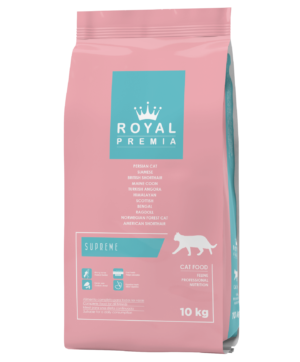Bengal Cat
Bengal cats are renowned for their striking appearance, combining the beauty of a wild leopard with the affectionate nature of a domestic feline. If you’re curious about Bengal cats and want to learn more about these exotic and captivating creatures, you’ve come to the right place.
In this, we’ll explore the origins, characteristics, and care requirements of Bengal cats in a way that’s easy to understand. So, let’s dive in and uncover the fascinating world of Bengal cats.
| Size | Medium to Large |
| Coat | Spotted, Marbled |
| Lifespan | 12-17 years |
| Coat Colors | Various |

Origins and History
Bengal cats are a relatively new breed that originated from crossing domestic cats with the Asian leopard cat. The breed was developed in the 1960s by a dedicated breeder named Jean Mill, who aimed to create a domestic cat with the distinctive coat pattern of a leopard. The result of her efforts was the Bengal cat, named after the scientific name of the leopard cat, Prionailurus bengalensis.

Physical Characteristics
One of the most notable features of Bengal cats is their coat. They have a luxurious and soft pelt that comes in a variety of patterns, including spotted and marbled. Their coat colors can range from brown and gold to silver and charcoal. Additionally, Bengal cats have a muscular and agile build, with a medium to large size, resembling their wild ancestors.

Temperament and Personality
Bengal cats are known for their energetic and playful nature. They possess a high level of curiosity and intelligence, which often translates into an adventurous streak. These cats love interactive play and mental stimulation, so providing them with toys and puzzles is highly recommended. Bengal cats also tend to be highly affectionate with their human companions, forming strong bonds and often seeking physical contact.

Care and Maintenance
When it comes to care requirements, Bengal cats are relatively low maintenance. Their short, dense coat requires minimal grooming and only occasional brushing to remove loose hair. However, providing them with a scratching post is essential to fulfill their natural instinct to scratch and climb. Regular playtime and exercise are also crucial to keep them mentally and physically stimulated.
Indoor Living Bengal Cats
While some Bengal cats can adapt to outdoor life, it’s generally recommended to keep them as indoor pets. This is because they retain some of their wild instincts, and outdoor environments can pose risks such as traffic accidents or exposure to diseases. Creating an enriching indoor environment with climbing structures, scratching posts and interactive toys will help keep your Bengal cat entertained and happy.

Health and Lifespan
Bengal cats are generally healthy and resilient, but like any breed, they may be prone to certain genetic health issues. These can include conditions like hypertrophic cardiomyopathy (a heart condition) and progressive retinal atrophy (a degenerative eye disease). Regular veterinary check-ups and a balanced diet can help ensure the well-being of your Bengal cat. With proper care, they can live a long and healthy life, typically ranging from 12 to 17 years.

Bengal Cats Diet
Bengal cats have similar dietary needs to other domestic cats. They should be fed a balanced diet of high-quality cat food that meets their nutritional requirements. Consult with your veterinarian to determine the best diet for your Bengal cat based on its age, activity level and any specific dietary needs.
Royal Premia Cat Food for Bengal Cat
-
Basic Adult Dry Cat Food 2kg and 10kg All Breeds
-
Supreme Dry Cat and Kitten Food 2kg and 10kg All Breeds
Breed Overview
Bengal cats are truly captivating creatures that combine the beauty of the wild with the charm of a domestic cat. Their striking appearance, playful personality and affectionate nature make them a popular choice for cat lovers seeking a unique companion.
By understanding their origins, characteristics and care requirements, you’ll be well-equipped to provide a loving and enriching environment for your Bengal cat. Enjoy the journey with these exotic beauties.

Bengal Cat Frequently Asked Questions
Are Bengal cats hypoallergenic?
Bengal cats are not considered hypoallergenic. While they may produce fewer allergens compared to some other cat breeds, they still produce allergenic proteins in their saliva and dander that can trigger allergies in sensitive individuals. It’s important to spend time with a Bengal cat before bringing one home if you have allergies to assess your reaction.
Do Bengal cats require a lot of attention and social interaction?
Bengal cats are known for being social and enjoy the company of their human family members. They thrive on attention, playtime, and interactive engagement. It’s important to provide them with mental and physical stimulation through regular play sessions and interactive toys. If you have to leave your Bengal cat alone for long periods, consider providing toys or activities that can keep them entertained in your absence.
Can Bengal cats be left alone for extended periods?
Bengal cats are social animals and enjoy human companionship. While they can tolerate being alone for moderate periods, it’s generally not recommended to leave them alone for extended periods regularly. If you need to be away for longer durations, consider providing interactive toys, puzzle feeders, or even considering adopting a companion cat to keep them company.









